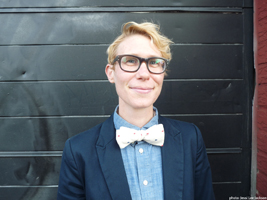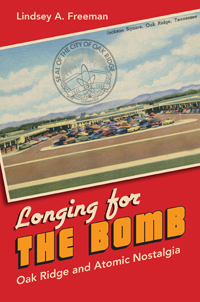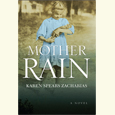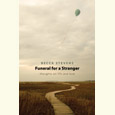Utopia, Nostalgia, and the Bomb
Oak Ridge tells triumphant stories about its past; Lindsey A. Freeman asks if they’re the right stories
In her insightful new book, Longing for the Bomb: Oak Ridge and Atomic Nostalgia, sociologist Lindsey A. Freeman describes the vision of John Hendrix, a turn-of-the-twentieth-century logger on the fringes of the Smoky Mountains. Hendrix was grieving the death of his daughter, and he was devastated that his wife had left him, taking their other three children with her. Voices in his head told him to spend forty days and forty nights in the woods. He barely survived starvation and cold, but he emerged with prophecies: The region, he proclaimed, “will be filled with great buildings and factories, and they will help toward winning the greatest war that ever will be.”
 At the time people figured Hendrix was insane, but by World War II, the story had become a founding myth for the city of Oak Ridge. Freeman analyzes this tale, along with many other stories the people of Oak Ridge tell about their city, and calls for a more critical examination of the community and the way it presents its past.
At the time people figured Hendrix was insane, but by World War II, the story had become a founding myth for the city of Oak Ridge. Freeman analyzes this tale, along with many other stories the people of Oak Ridge tell about their city, and calls for a more critical examination of the community and the way it presents its past.
Carved out of 59,000 hilly acres in East Tennessee, Oak Ridge was one of three main sites for the Manhattan Project. During the quest to build atomic weapons and win World War II, an enclosed, self-contained city sprang up from nothing, drawing in 125,000 workers, from scientists to construction workers, engineers to librarians, lab technicians to prostitutes. Oak Ridge demanded enormous resources—at times, it used more electricity than all of New York City.
The Hendrix prophecy, Freeman argues, was one way for Oak Ridge to justify its founding. The federal site demanded the evacuation of communities like Wheat, Elza, Scarboro, New Hope, and Robertsville. By retelling the Hendrix story in newspaper articles, books, and museum exhibits, the city portrayed its origin not as a tale of forced eviction, but as a mystical fait accompli rooted in the rural frontier but cast in the name of scientific progress.
Freeman brings this same analytical edge to understanding the experiences of workers in Oak Ridge. In personal recollections and public commemorations, Oak Ridgers cast their city as an “atomic utopia,” “an island of culture, prestige, and intelligence tucked away from the surrounding communities and the outside world.” It had full employment, good pay, universal health care, free bus lines, cheap housing, and cultural activities that ranged from a top-notch symphony orchestra to the largest swimming pool in the South.
But Oak Ridge’s actual history was messier. The work demanded obedience to orders, acceptance of compartmentalized and monotonous jobs, and silence about potential health risks from radiation. For all the tales of rubbing shoulders with world-class scientists, housing in Oak Ridge was sharply differentiated by class. African Americans were hired for only the hardest, most dangerous jobs and lived in segregated communities. The security demands of the Manhattan Project, moreover, created a repressive environment: lie-detector tests, identification badges, and constant admonitions to keep quiet both inside and outside the confines of the “Secret City.” According to Freeman, “Workers who arrived in Oak Ridge had been recruited in the name of freedom and democracy, yet paradoxically they found themselves inside a federal reservation surrounded by barbed wire, armed guards, and monitored gates.”
 The bombing of Hiroshima on August 6, 1945, marked a crossroads for Oak Ridge. Its facilities had created fissionable uranium for the bomb nicknamed “Little Boy,” and its residents expressed joy and relief upon news of its impact upon Japan. But now what? Oak Ridge scientists lobbied for civilian control of the atomic-energy program. Hollywood, strangely, got into the act with the 1947 MGM film The Beginning or the End, which celebrated American scientists and the necessity of the nuclear attacks. Oak Ridge’s population shrank, but those who remained were invested in the city’s mission of atomic production during peacetime and resistant to the incorporation of Oak Ridge by the state of Tennessee—the gates and secrecy had given them a sense of specialness and the need to keep a lasting grip on their “atomic utopia.” But in March of 1949, Oak Ridge nevertheless opened the gates, kicking off the elaborate ceremony with a puff of white smoke meant to resemble a tiny mushroom cloud.
The bombing of Hiroshima on August 6, 1945, marked a crossroads for Oak Ridge. Its facilities had created fissionable uranium for the bomb nicknamed “Little Boy,” and its residents expressed joy and relief upon news of its impact upon Japan. But now what? Oak Ridge scientists lobbied for civilian control of the atomic-energy program. Hollywood, strangely, got into the act with the 1947 MGM film The Beginning or the End, which celebrated American scientists and the necessity of the nuclear attacks. Oak Ridge’s population shrank, but those who remained were invested in the city’s mission of atomic production during peacetime and resistant to the incorporation of Oak Ridge by the state of Tennessee—the gates and secrecy had given them a sense of specialness and the need to keep a lasting grip on their “atomic utopia.” But in March of 1949, Oak Ridge nevertheless opened the gates, kicking off the elaborate ceremony with a puff of white smoke meant to resemble a tiny mushroom cloud.
In the last few chapters, Freeman investigates the ways Oak Ridge has since fostered a sense of “atomic nostalgia,” honoring its role in World War II while sweeping aside any troubling concerns. For instance, the American Museum of Science and Energy showcases a wax model of Albert Einstein next to a copy of his famous 1939 letter to Franklin Roosevelt, which urged the development of nuclear weaponry, but it ignores Einstein’s later regrets about the dawn of the atomic era. Freeman also visits the annual Secret City Festival, “where mid-century bobbysox nostalgia does the Twist with nuclear physics and military machismo.” Bus and train tours reinforce a narrative of American goodness, she writes, “with Oak Ridgers starring as atomic cowboys riding tall in the saddle and wearing white hats and lab coats.”
Longing for the Bomb complicates this story, but not to tear down history. Instead Freeman calls for a “critical nostalgia” that acknowledges the romantic pull of the past but also allows us to imagine a better future. She finds one hopeful example in a 2013 special exhibit at the American Museum of Science and Energy, which highlighted a U.S. Marine photographer’s images of the devastation wrought by the atomic bombs on Hiroshima and Nagasaki. Placed alongside the idealized, government-sanctioned images of Oak Ridge by an official U.S. Army photographer, it allows for two visions of the atomic-bomb project to rub against each other, painting a fuller portrait of humanity.
Freeman was born in Oak Ridge, and her grandparents stayed there. As a child, she had a t-shirt emblazoned, “I’m from Oak Ridge. I glow in the dark.” She still has a once-radioactive dime, a souvenir from an Oak Ridge museum. Her research is rooted in interviews with residents, including family and friends. With a unique voice, she toggles between situating herself in the sociological literature and offering quirky, first-person accounts of her excursions, from coffee with her grandmother to shopping at the Secret City Festival. At its core, however, Longing for the Bomb has a serious mission: sifting through Oak Ridge’s myths and pleading for a more progressive vision.

Aram Goudsouzian chairs the history department at the University of Memphis. His most recent book is Down to the Crossroads: Civil Rights, Black Power, and the Meredith March Against Fear.


